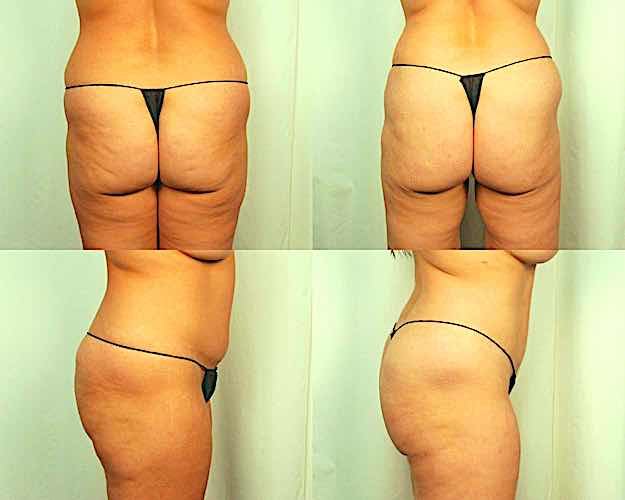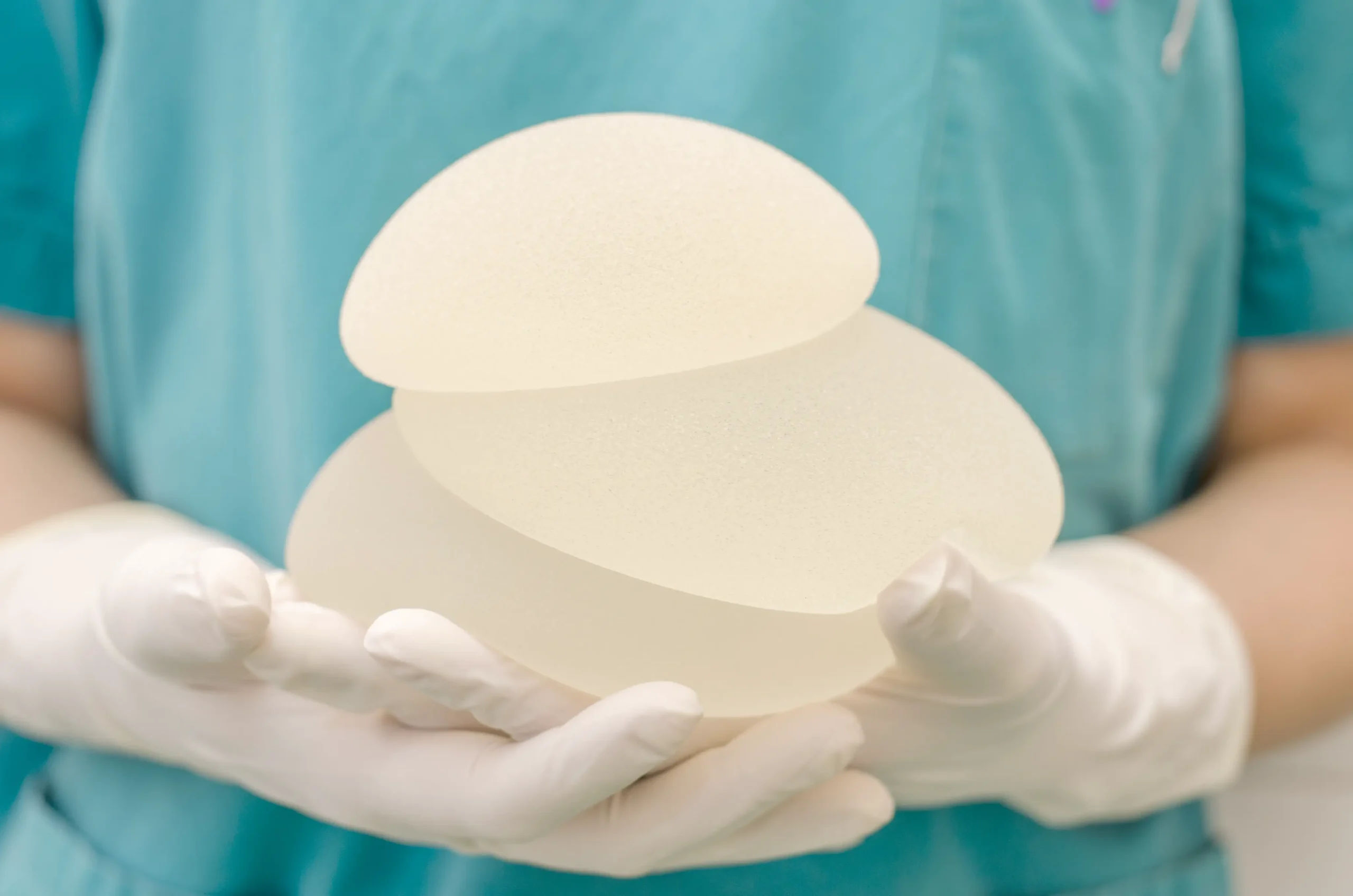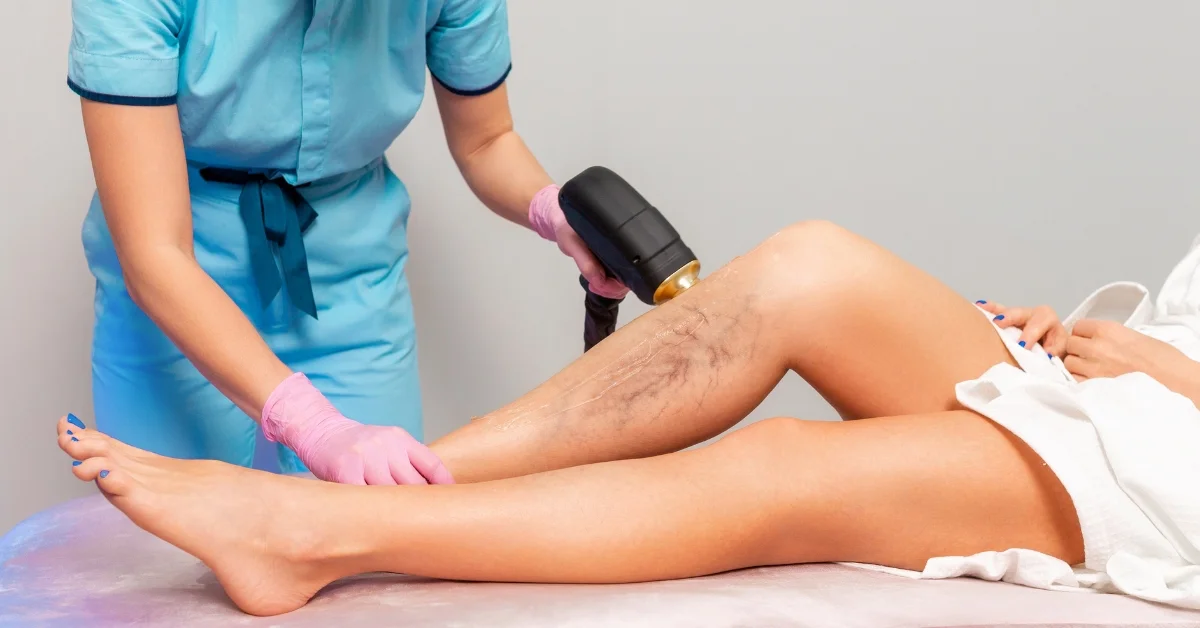- Cellulaze uses laser energy to liquefy fat and release the fibrous bands that cause the dimpled look of cellulite.
- Just one session is required, and results take 3–12 months to fully materialize.
- Patients and physicians report improvements that last several years after the treatment has been performed.
What is Cellulaze?
Approved by the Food and Drug Administration (FDA) in 2012, Cellulaze uses a small laser fiber inserted under the patient’s skin to heat and melt away lumpy fat pockets, while softening the bands of connective tissue that hold them together and cause cellulite.
Cellulaze uses the SideLaze 3D™ Cellulaze laser fiber to deliver energy to the connective tissue bands, skin, and fat.
“It thereby increases the thickness and quality of the skin, releases the fibrous bands that pull the skin down (which minimizes the dimpled look of the cellulite), and liquefies some of the surrounding fat,” Dr. Jonathan Heistein, a board-certified plastic surgeon in Fort Worth, TX, explains.
Is Cellulaze effective?
While Cellulaze is not a cure for cellulite, it is effective in reducing the dimpled appearance in the thighs often described as “cottage cheese” or “orange peel” skin.
“The result is skin with a smoother look,” says Dr. Heistein.
The procedure has a high rate of success and patient satisfaction. While long-term data is unavailable at this point in time, a recent study published by the American Society for Aesthetic Plastic Surgery states that the system “provides a sustainable improvement in the appearance of cellulite for at least 1 year (…). Other publications have shown results maintaining at least 3 years.”
The study concludes that “data to date have shown this single laser procedure to have an outstanding safety profile with a high satisfaction rate for both physicians and subjects.”
How many treatments are required?
According to Dr. Heistein, Cellulaze requires just one treatment. However, cellulite may reappear and thus warrant additional treatments if the patient puts on weight.
How quickly do results appear?
“The final results may take 3–12 months to achieve the maximum benefit,” says Dr. Heistein. In other words, you should expect to see continued improvement over several months.
Cellulaze before and after picture

Is local anesthesia used?
Depending on the size of the treatment area and the amount of cellulite, either a topical anesthetic, local anesthesia or general anesthesia may be used.
Though Cellulaze is considered to be minimally invasive, it is invasive enough that it must be performed at a surgical facility with a nurse and other support staff to assist the surgeon. If the procedure is performed under general anesthesia, an anesthesiologist and additional nursing staff will be present.
What is the recovery like?
Cellulaze requires approximately one week of downtime.
“After the procedure, there will be mild soreness, swelling, and bruising,” says Dr. Heistein. “The majority of this is gone within the first 2–3 weeks. Patients need to wear compression garments after surgery, but they can expect to be able to do non-strenuous activities within 1–2 days.”
Most patients have minimal discomfort and little pain. Anti-inflammatories or other pain medication can be prescribed if necessary.
Are there any side effects or potential complications?
Like any cosmetic treatment, Cellulaze does have some potential side effects, including:
- Skin burns
- Contour abnormalities
- Seroma (fluid buildup)
- Bruising
- Swelling
The most common is swelling in the treatment area, which typically goes away after about a month. If swelling persists or if pain is severe, patients are advised to contact their surgeon. Due to lack of data, it is unclear what the long-term side effects, if any, might be.
Who is a good candidate?
Not everyone is a good candidate for Cellulaze. Young patients generally see better results than older patients, since Cellulaze is more effective on thicker skin than on thin skin. Those with very subtle or nearly unnoticeable cellulite are likely to be unhappy with their results, as are those with severe cellulite and lax skin. It should also be noted that Cellulaze is not the right solution for patients who are looking to shed weight.
While the treatment is not a cure-all for cellulite, the good news is that most patients are happy with the results.
As with any cosmetic treatment, patients are far more likely to achieve the results they are looking for by choosing a qualified practitioner who thoroughly understands the technology, such as a board-certified plastic surgeon or dermatologist.
How much does Cellulaze cost?
The cost of Cellulaze can vary significantly based on the location of the practice, the experience and reputation of the practitioner, the number of body areas being treated, and other factors. That said, the treatment may cost between $5,000 and $10,000.
What other treatments are available?
There are many cellulite treatments on the market that have no basis in science. Fortunately, there are also several well-tested technologies that may be effective, depending on the patient.
Studies have shown that while no single procedure can completely eliminate cellulite, improvements can be achieved with Cellulaze, Cellfina and VelaShape.
While these three treatments share some things in common, each has pros and cons that may render one more suitable for you than the other. For example, Cellulaze treatment is more likely to cause burning, while Cellfina is more commonly associated with bruising.
VelaShape III
This treatment improves the texture of the skin and reduces the volume of the area being treated through a combination of four separate technologies: radiofrequency, massage rollers, infrared light, and pulsed vacuum technology. Results of earlier versions of VelaShape were mixed, but the VelaShape III appears to be receiving better reviews.
Cellfina
Another relatively new technology that many doctors prefer is Cellfina. While Cellulaze involves the use of lasers to cut the fibrous bands that restrict the skin and surrounding muscles that lead to the dimpling associated with cellulite, Cellfina cuts the same bands with a blade.
Determining which treatment is best suited to your needs will depend on several factors. It is advised to schedule an appointment with a board-certified plastic surgeon or dermatologist. During your consultation you can ask any questions you may have, address any concerns, and tell the specialist how much you want to spend—all important factors in determining which procedure to choose.









